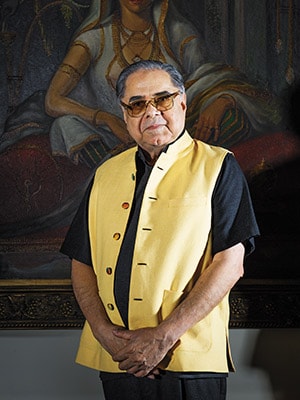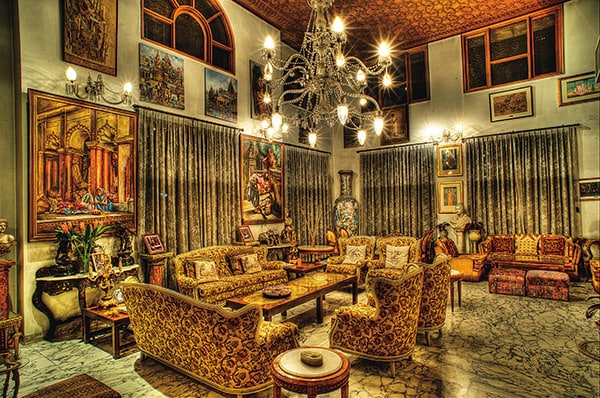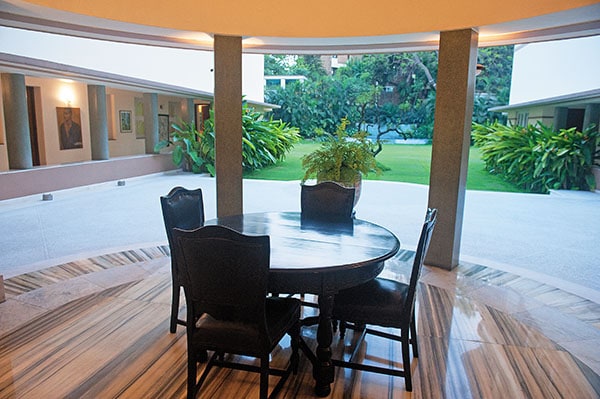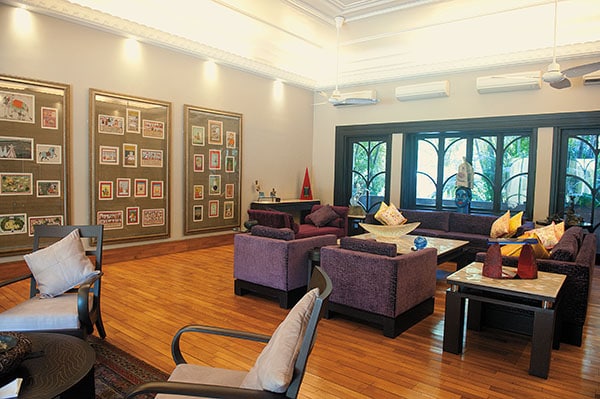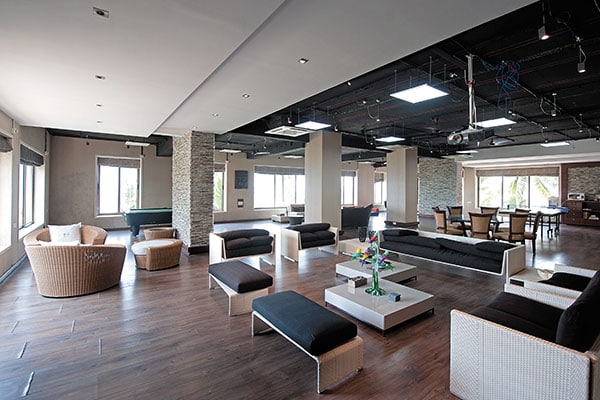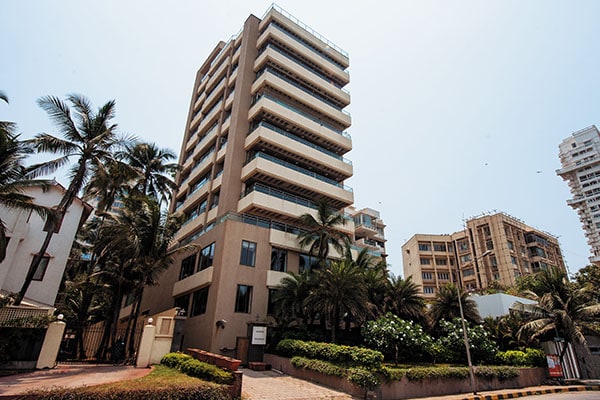
Home Truths: The Residences of Business Leaders
There is no compromise when it comes to their personal space, say business leaders
Don’t get misled by the trappings—the high-end hotels or Michelin star restaurants or the luxury branded lifestyle. It is exhausting being a corporate leader. Imagine chasing profit for a living. No, it cannot always be fun.
Downtime is a religious experience for a CEO or entrepreneur. A few uninterrupted hours in the comfort of their homes define real luxury for them. Inevitably, then, they will ensure that it is spent in an environment best-suited to them, to their personalities. From the colour of the walls to the furniture to the accessories adorning the little nooks and corners, Forbes India finds that business leaders have exacting standards about what goes into the creation of their safe place—their home.
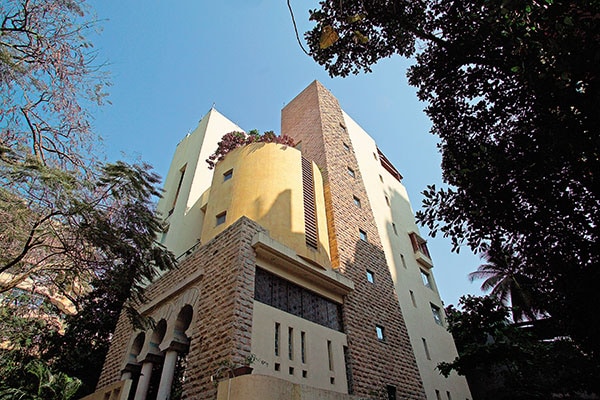
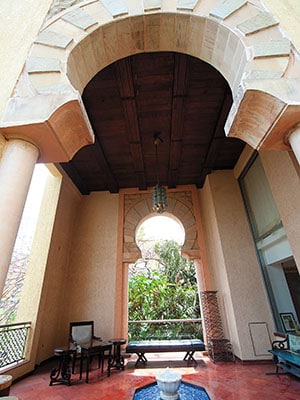
Imgage: Vikas Khot
The terrace on Khorakiwala’s personal floor (fifth) has a fountain in the centre and a small garden on the open terrace. The arched columns and fountain are inspired by the Spanish Alhambra palace
The east–facing side of the building uses a glass façade to welcome the rising sun into the Khorakiwala home. Two other sides are made of Malad stone (sourced from the quarries in the eponymous area of Mumbai). There are two large living rooms on the ground floor overlooking the fountains and trees appointed around the house. The ceiling of the first living room is at a height of 24 feet, and an equally tall painting by artist Paresh Maity adorns one of its walls.
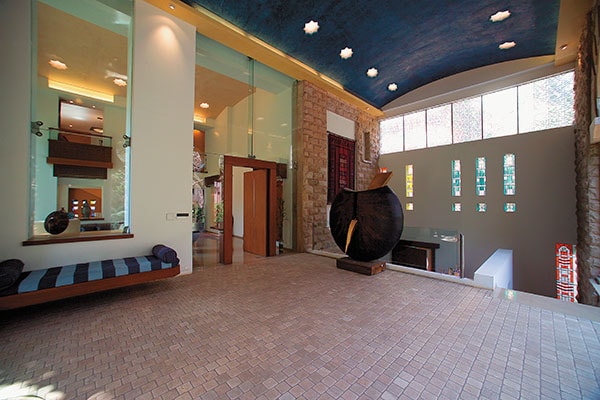
The massive entrance porch has a 24-feet-high ceiling. The installation beside the entrance door is by artist Jehangir Jani. It represents a leather water bag used in desert areas, pierced by a dagger—representing the release of water which you notice cascading all around the periphery of Khorakiwala’s house
The third and fourth floors are occupied by his sons, each comprising three bedrooms, a living area and a fully functional pantry. The fifth floor is where Khorakiwala stays; here, apart from his bedroom and the living room, an open terrace garden is attached to a courtyard with a small fountain in the centre. The inspiration from the Moorish castle is obvious in the usage of huge column arcades on the two sides of the courtyard, letting in fresh air and morning sunlight from the east. “In the entire building, wherever we have used form, we took inspiration from the Moorish empire’s style of architecture where water, space and light were essential to any structural planning,” he says.
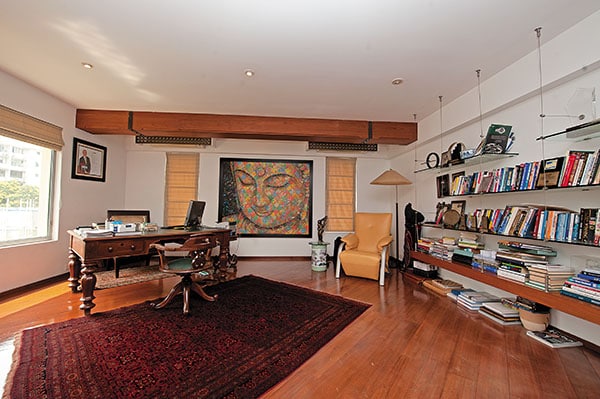
The sixth floor is Khorakiwala’s personal space. It houses his study where he keeps his favourite books and has an entertainment room. A gymnasium has been built on the seventh floor where he works out at least four times a week, while the top floor has a pool where the family often unwinds on the weekends.
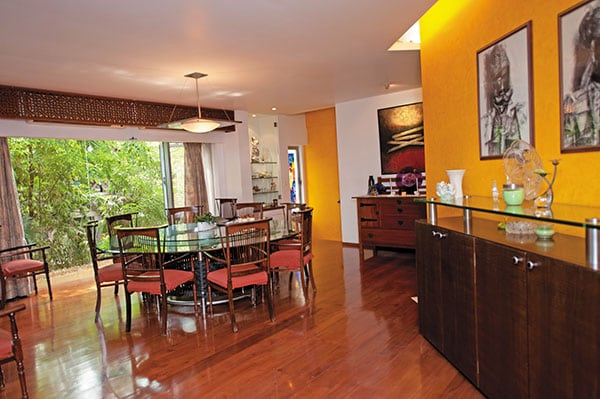
The family dining room that is on level 2 of the main living room
The dining area is situated immediately above the second living room, flanked by the central home kitchen.

The main living room where Khorakiwala entertains guests. The east-facing glass wall lets the morning sunlight in and gives a view of the trees planted outside. On the right is a 24-feethigh painting by artist Paresh Maity
The Khorakiwala family (wife, two sons, daughters-in-law and grandchildren) has its meals together at least four times a week. “Although many of us travel for work, we try and have a few meals together, and all the food is always prepared in the central kitchen,” says Khorakiwala. And you know what they say about the family that eats together.
VC Burman has houses at Malabar Hill in Mumbai, Rashbehari Avenue in Kolkata, Grosvenor Square in London, and a portfolio of prime real estate that spans the globe. But home is his 30-year-old bungalow—43 A, Prithviraj Road in Lutyens’ Delhi. As chairman of Dabur, India’s largest Ayurvedic medicine manufacturer that has a presence across the world, Burman spends only three-four months a year in his Delhi house. “My home is where my wife and children are. So this is the only place I would call home,” he says.
The Burmans moved from Kolkata to Delhi 40 years ago. “We are used to living in a spacious house with a big garden because that’s how we lived in Kolkata,” says his wife Monica. “When we moved to Delhi we zeroed in on Lutyens’ Delhi.”
The neighbourhood is one of Delhi’s most stunning locations. “I love the fact that Lodi Gardens is right behind the house. I take my evening walks there, whenever I am here [in Delhi],” adds Burman.
The house that the Burmans now live in is not the one they had originally bought. According to Monica, the original property was an old house on a half-acre plot. It had one room in the centre, four bedrooms and a garden in the backyard. Ten years later, when the New Delhi Municipal Corporation relaxed the rules for redevelopment in Lutyens’ Delhi, the Burmans built the bungalow they currently live in.
His favourite spot in his eight-bedroom bungalow is the study. “This room has all my needs. It has a TV, a table where I can write, a phone to call people, and my radio.” The 77-year-old chairman loves tuning into the radio. He particularly likes to track Dabur ads on radio channels.

